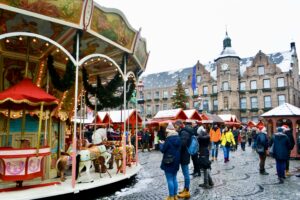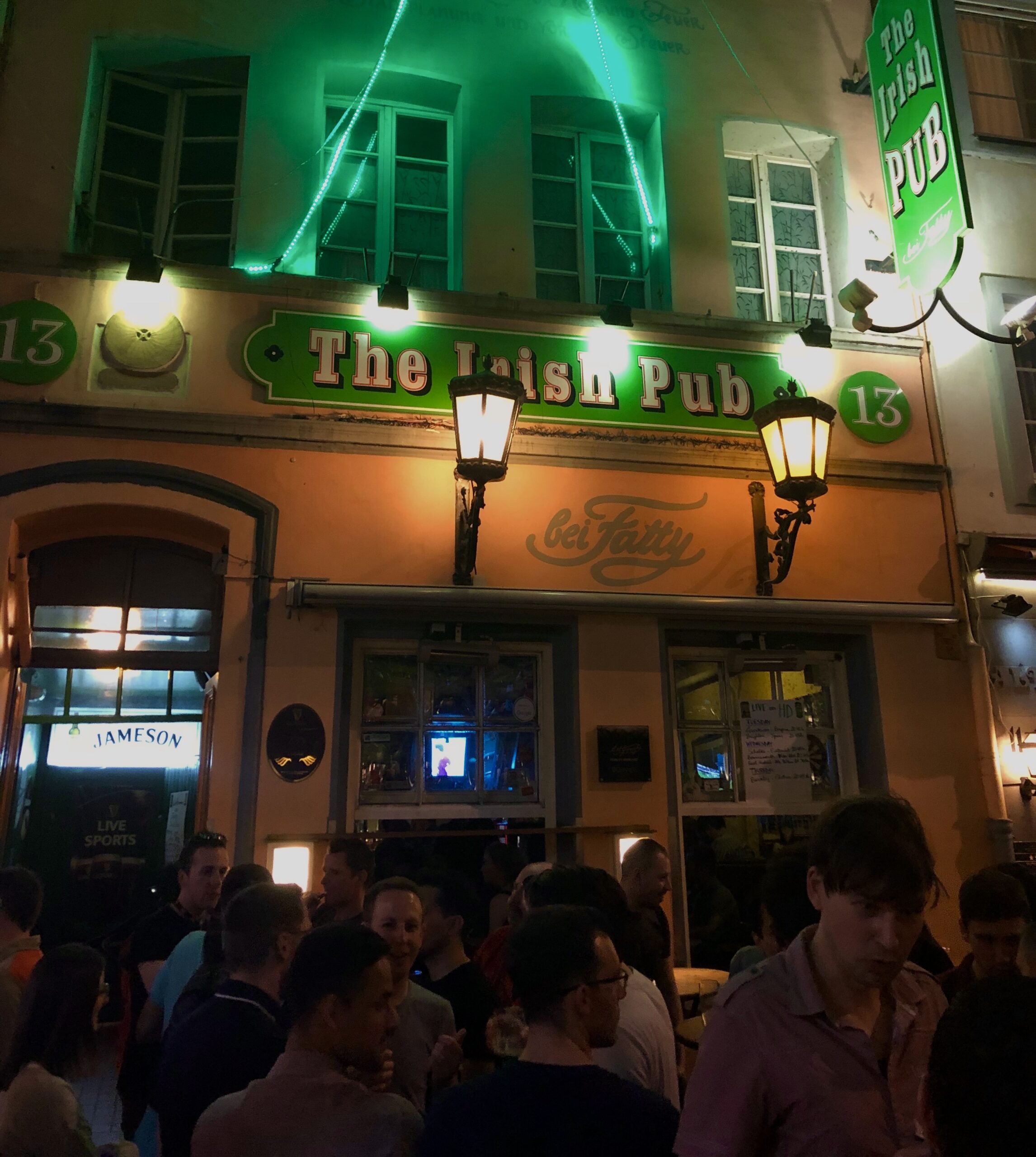76 years ago, a remarkable event occurred. An act of incredible bravery which saved thousands of lives.
What comes to mind when you think of this? V-E Day perhaps? Or the release of prisoners from various concentration camps?
Actually, no.
As important as they were, I’m talking about something closer to home. So close, in fact, that a lot of people in Düsseldorf wouldn’t be reading this today if it hadn’t taken place.
Meet the heroes who saved Düsseldorf.
The Nazis Fight Forward
Firstly, a little backstory. By spring 1945, it was clear that Germany was going to lose the war. American troops had surrounded Düsseldorf, occupying the left bank of the Rhine and the neighboring town of Neuss. However, the local Nazis were still holding out. The ‘Gauleiter’ (i.e., the Nazi official in charge of the district), Friedrich Karl Florian was prepared to order a ‘scorched-earth policy’, rather than surrender. With US forces poised to launch a massive attack from the air, all looked bleak for those who still lived in the city.
It was then that a resistance group decided to act.
Fürstenwall ~ once the meeting spot for the resistance group
Take a walk down ‘Fürstenwall’ in Düsseldorf-Unterbilk, and you’ll come across a couple of display boards. They mark the first two stops on the ‘Road to Liberation’, a project to commemorate ‘Aktion Rheinland’ (Operation Rhineland).
The first board is located near number 74. Today, it’s a nondescript modern building, but back then it was the home of a baker named Josef Lauxtermann. Members of the resistance group had been meeting here since the 1930s, initially to discuss politics and later to plan how they would hand Düsseldorf over to the Americans with as little bloodshed as possible.
TIP: The Landeshauptstadt Düsseldorf has detailed aerial maps on its website, dating back to the 1920s if you wish to get a precise view of what the area was like at the time.
Meeting with the Schutzpolizei at Polizeipräsidium
The second board can be found a little further along the road at ‘Polizeipräsidium’. It was here, on April 16, 1945, that the group members met with Lt. Colonel Franz Jürgens of the ‘Schutzpolizei’ police force, who was sympathetic to their cause. It was agreed that the lawyer, Dr. Karl August Wiedenhofen, and the architect, Aloys Odenthal would make their way to the American base in Mettmann to negotiate the peaceful surrender of the city.
Jürgens agreed to provide Wiedenhofen and Odenthal with special papers which would allow them to pass through various German checkpoints on their journey. A police car and driver were also placed at their disposal, and as a further security measure, the Chief of Police, August Korreng was taken prisoner.
The streets of Gerresheim ~ the beginning of their road to liberation
Wiedenhofen and Odenthal were driven to Gerresheim in the early afternoon. They parted ways with the driver at ‘Auf der Hardt’, (where the third display board is now situated), after extracting a promise from him not to disclose their plans to anyone. Odenthal made a brief stop at Lakronstraße (the location of the fourth display board) to say goodbye to his wife, before reuniting with Wiedenhofen at Gerresheim Cemetery and continuing the journey towards Mettmann on foot.
Meeting the pastor in Hubbelrath
After traversing Rotthauser Weg, the two men arrived in Hubbelrath, where they met the pastor, Lebrecht Petri at St. Cecilia’s Catholic Church (the location of the fifth display board).

Pastor Petri was not overly optimistic and warned them of the dangers they would face. Nonetheless, he did say a prayer for them in the hope that their mission would be successful. Having received this blessing, Wiedenhofen and Odenthal bade farewell to the pastor and went on their way. Almost immediately afterward, they encountered trouble as they were stopped by a group of German soldiers.
Mercifully, however, the soldiers accepted the men’s explanation that they were a farmer and veterinarian, and allowed them to pass without further hindrance. A while later, at around 6:00 pm, Wiedenhofen and Odenthal finally reached Mettmann, where they spotted the American headquarters on Neanderstraße (the sixth and final stop). They hurried towards it, waving a white flag as they approached.
The heroes who saved Düsseldorf were revealed
Long negotiations then followed – with the Americans initially distrustful of the two Germans. Nevertheless, Wiedenhofen and Odenthal eventually persuaded them that they would face no resistance if they simply entered Düsseldorf via a ground offensive. One key thing that helped to convince them was the provision of Franz Jürgens’ papers. At the last moment, the planned air raid was called off and the following morning, American tanks rolled into the city. Sitting astride two of them were Wiederhofen and Odenthal – mission accomplished and Düsseldorf saved.
However, this came at a price…
In their absence, the resistance group was betrayed by a member of the police force, who managed to alert Gauleiter Florian that August Korreng had been taken prisoner. The Nazis stormed the building to free Korreng and capture the group. They arrested Franz Jürgens along with four other men – Theodor Andresen, Karl Kleppe, Josef Knab, and Hermann Weill.
Within hours, the men were indicted before a tribunal at the Steigenberger Parkhotel, found guilty of treason, and sentenced to death. They were then taken to a schoolyard on Färberstraße (now a quiet corner on the residential street, Anton-Betz-Straße), where they were duly shot. Later examination of the bodies indicated that Andresen and Knab had also been subjected to torture.
 The site of the execution on Anton-Betz-Straße
The site of the execution on Anton-Betz-Straße
Shockingly enough, a later post-war hearing upheld the legality of their convictions. It wasn’t until 1999 that this verdict was overturned and the bravery of these men was rightly recognized.
Wreaths are now laid every year at the spot where they were executed. A few meters away is a memorial tablet (pictured at the head of this article) which provides a poignant epitaph.
“On April 16, 1945, the following loyal citizens fell at this spot in order to free the City of Düsseldorf from the tyranny of Nazism:
Lt. Colonel Franz Jürgens of the Schutzpolizei police force
Theodor Andresen
Karl Kleppe
Josef Knab
Hermann Weill
Our love – their reward”
[box] If you liked this piece, you’ll need to check out Elizabeth’s article on how we have Germany to thank for Donald Trump & the 2020 elections! [/box]












